I’m a big fan of DIY. When my daughter’s leggings wear out, I turn them into shorts with my sewing machine. When an electrical outlet stops working, I watch YouTube tutorials and replace it myself.
But I also know that sometimes, DIY is just not a good idea. My DIY prowess will never compare to a professional’s. I’m willing to spend money for job done right.
If you’re printing your own canvases from the digital files rather than ordering through your photographer, you’re DIY’ing a job that should only be done by a pro, and you probably don’t even realize it.
Why canvases are not like regular prints
The image file needed for a good canvas is not the same one you’d use for an 8×10 or 4×6. Canvases require a large amount of negative space around the subject of the photo to accommodate the canvas fabric that wraps around the frame.
Take a look at the canvas print “guide” below. The blue rectangle is 18×24 inches, which represents the face of the finished canvas. The subjects of the photo must be completely inside the blue rectangle.
However, the image I upload for printing the canvas must completely fill the red area. That 18×24 image just became 22×28.
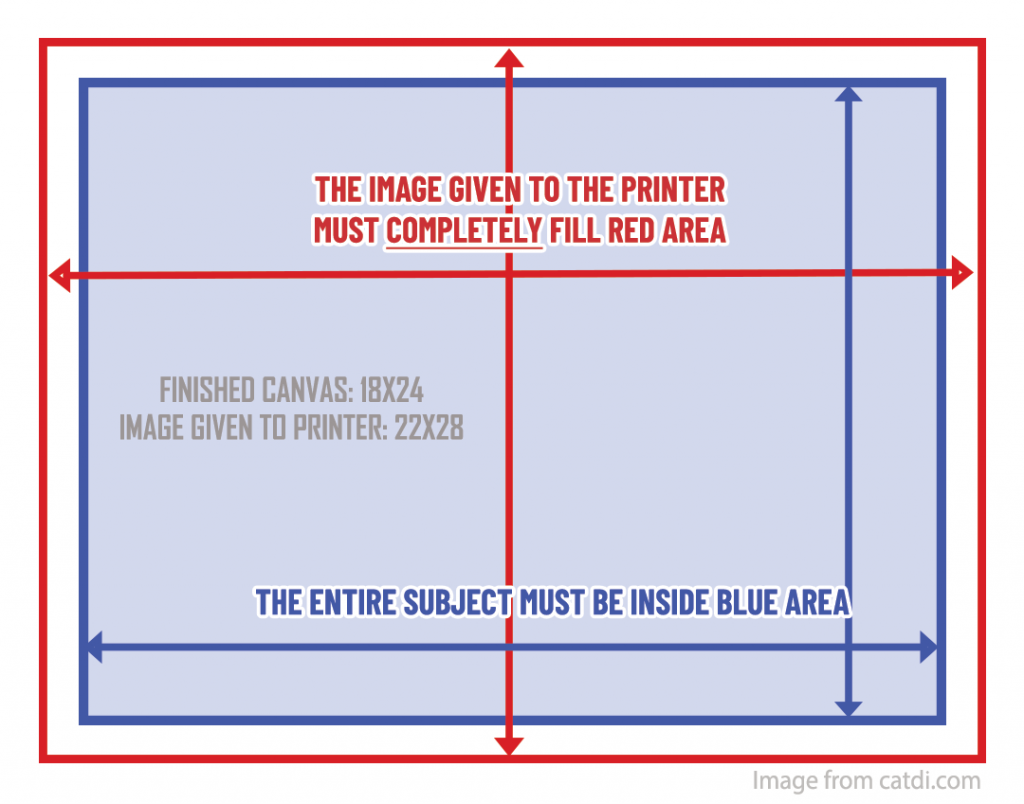
Sure, you might get lucky with lots of negative space on the sides of your image, but it’s rare (and that kind of crop is reserved for images where the subjects faces are less important than their surroundings).
Almost always, there’s not enough negative space on at least one side of the image… or more likely, not enough room on ANY side.
The consequences: amputees, ack!
A friend of mine prefers to handle her own canvas printing in order to save money. Here’s one example:
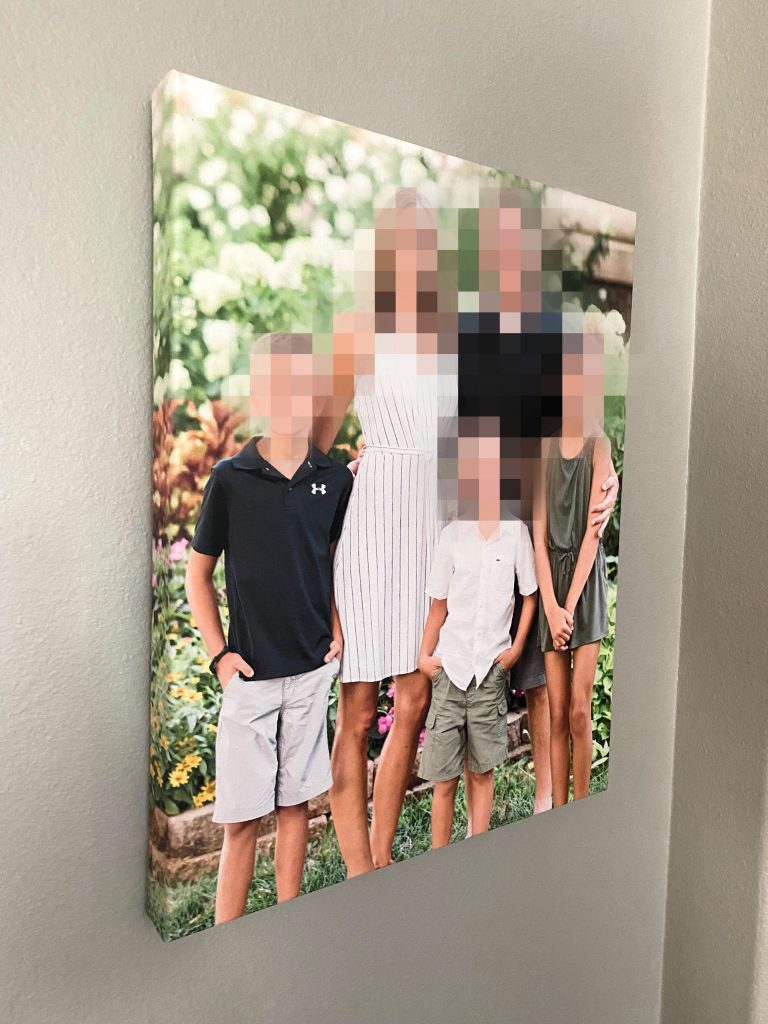
The photographer didn’t cut off their feet—she did her job correctly. But the feet ended up in the wrap margin, which makes them essentially invisible to the viewer:
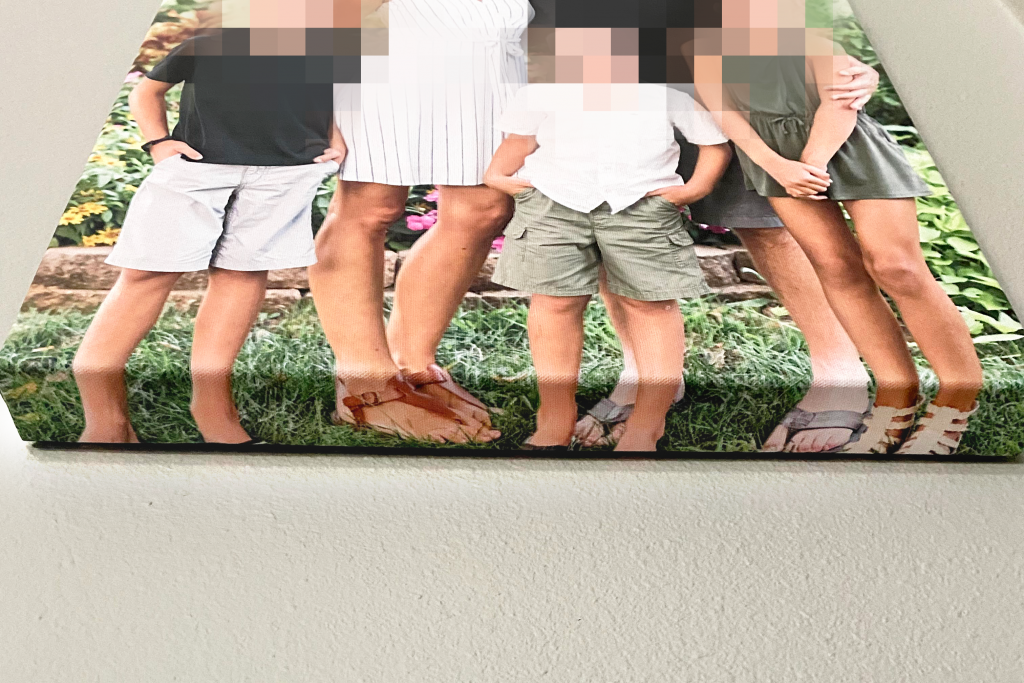
It’s a cardinal rule in photography that you never cut off a subject’s feet at the ankles. The visual it creates is unsettling. By printing her canvas on her own, my friend unintentionally futzed up the photo she loved. 😬
One more example:
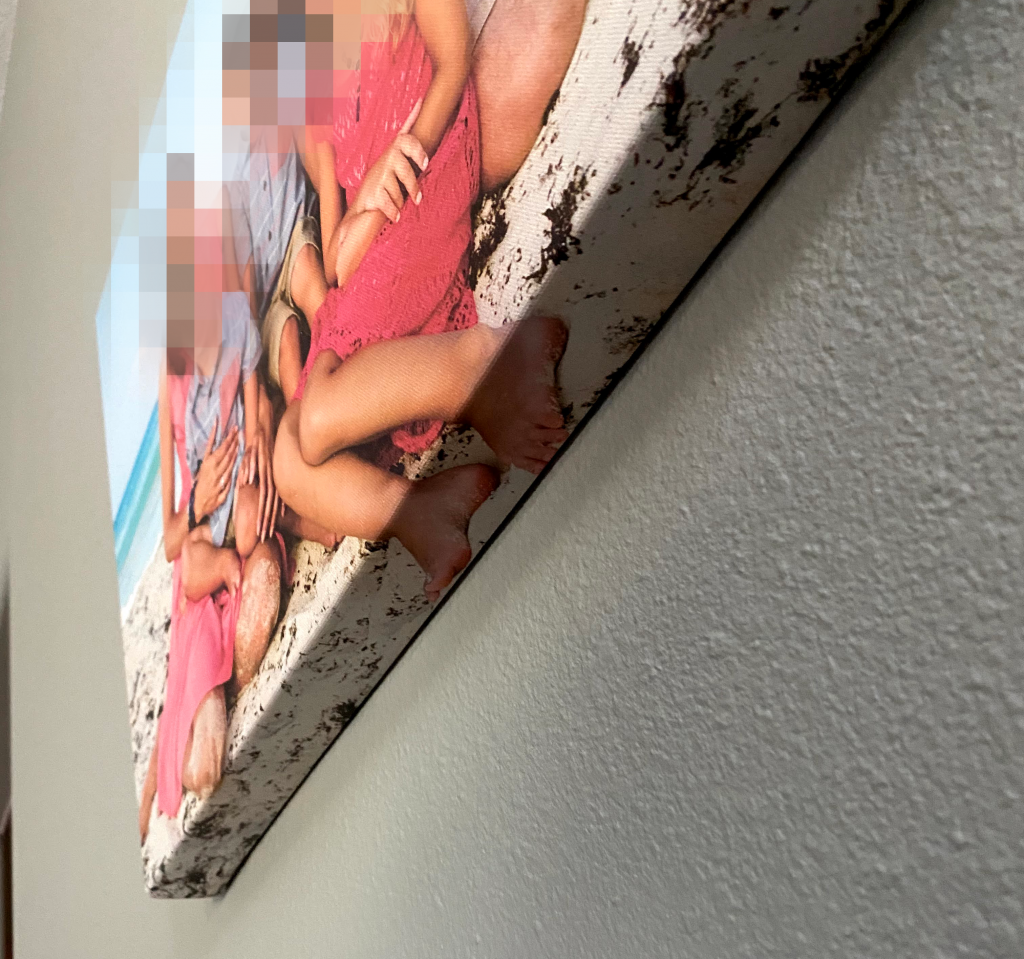
Her lovely daughter’s feet got the axe this time. No bueno.
The magic of your photographer
I deliver each photo with prints in mind—8x10s, 5x7s, etc.—so I choose the most visually pleasing crop for prints. I often end up cropping in closer to focus on your family, tell your story, spotlight intimacy, or remove a distraction.
When you use an image intended for prints on a canvas, you’re taking that “print” crop and cropping it even more. That drastic crop decimates the negative space, and sometimes chops off precious limbs.
The most visually pleasing crop for a canvas is not the same crop for prints. I keep the original uncropped photo (with all its negative space) and the print-crop version for just this reason.
Some canvas sorcery
Meet the lovely and adventurous Durham family (who bravely waded through shoulder-high weeds to get to this awesome creek). The first image was delivered in their gallery. Plop that puppy on a canvas and… yikes! No feet! Picture 2 is the original image file, no cropping. Perfection!
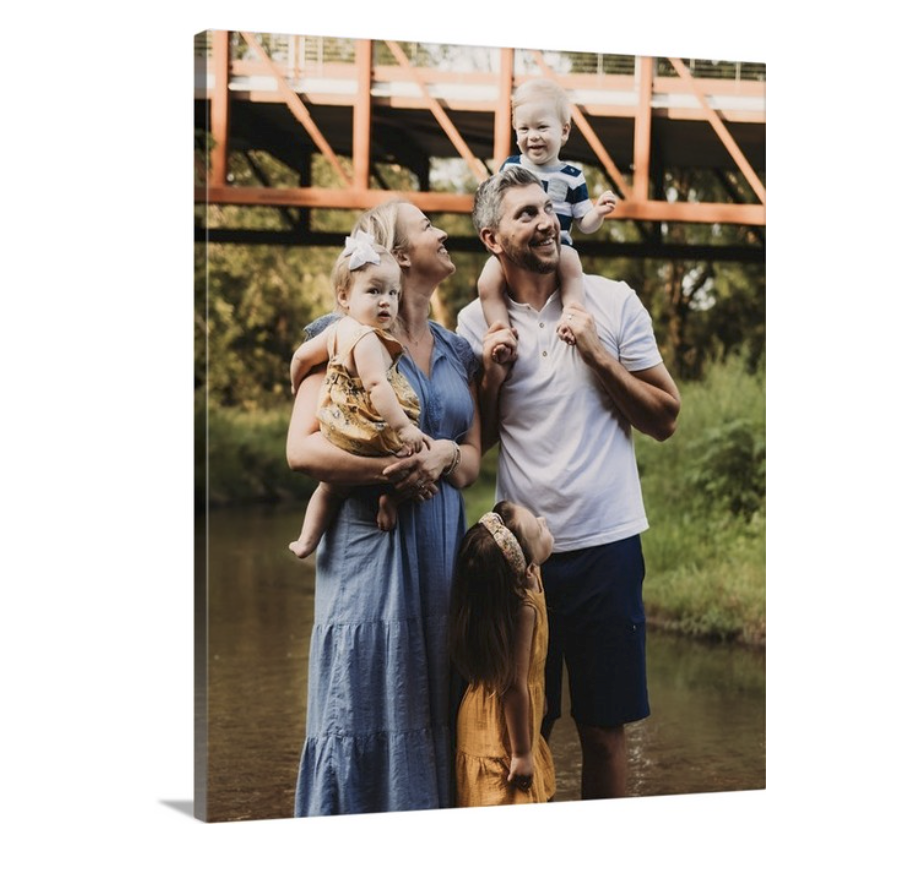
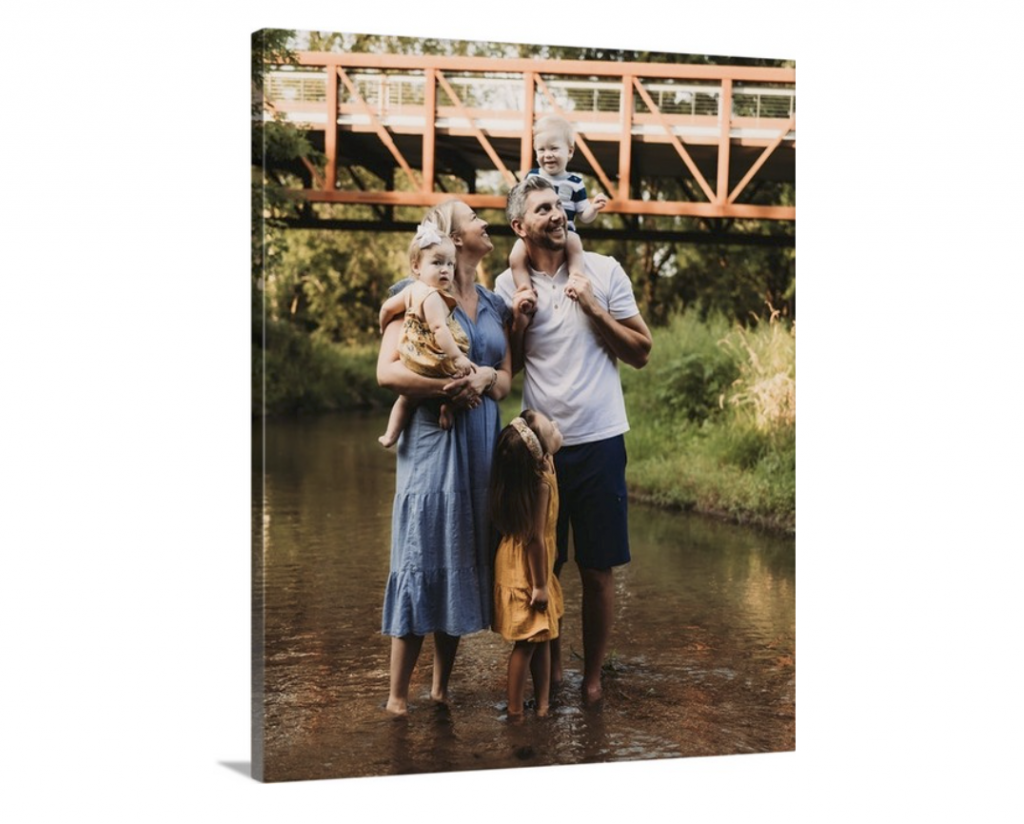
Example number two. Another amputation tragedy averted!
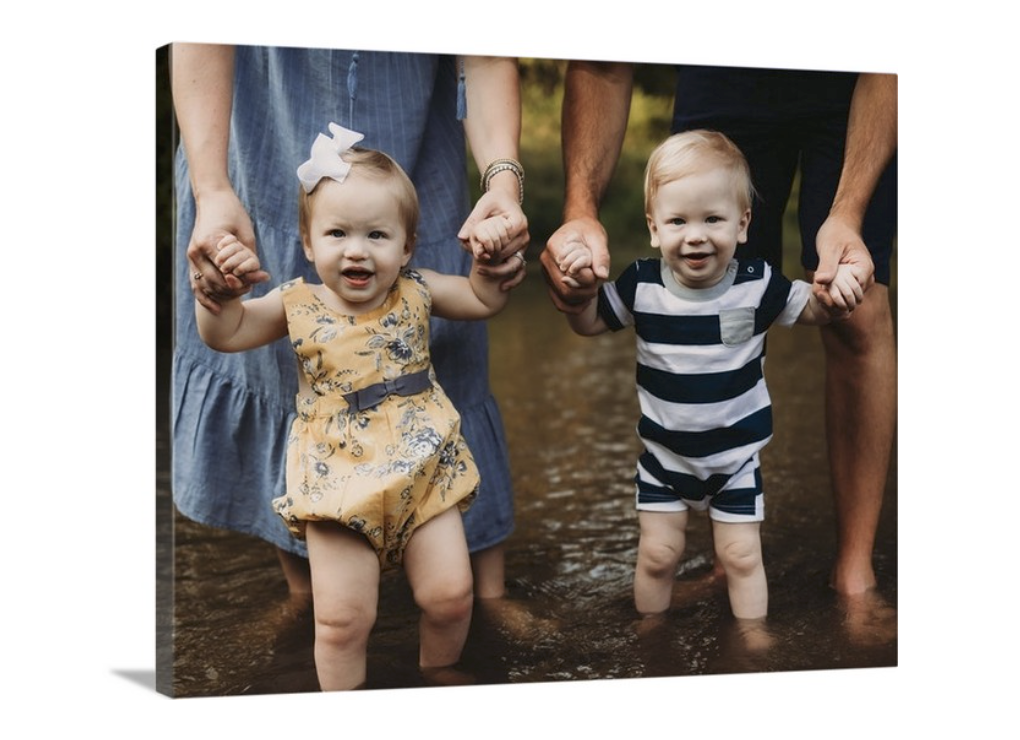
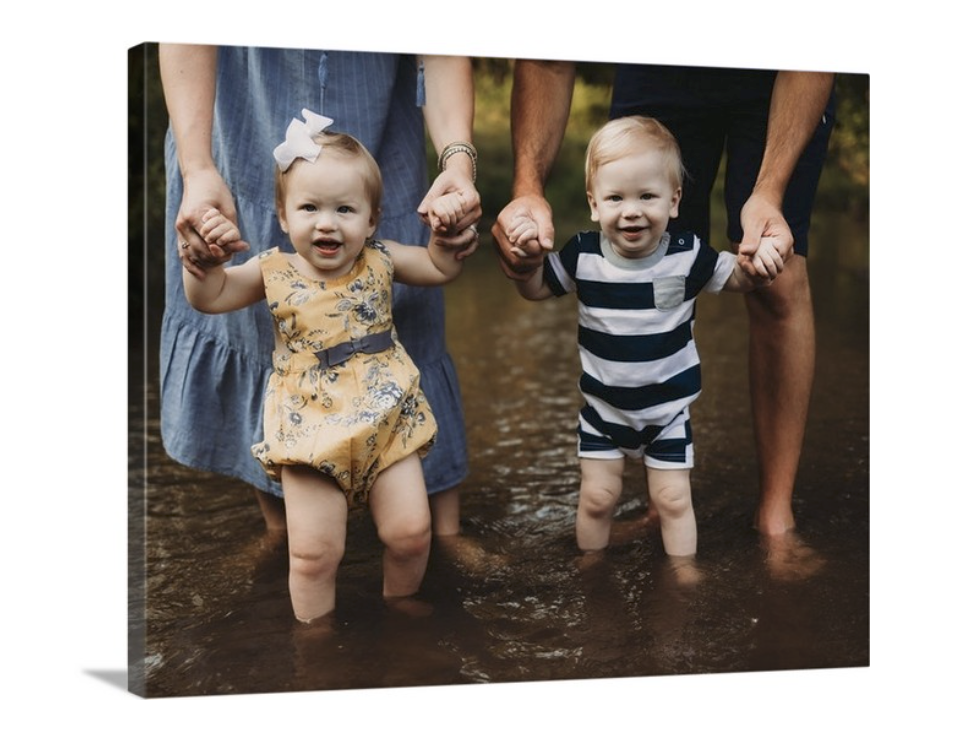
Finally, the Ruhnke family. When I look at that first image, I get claustrophobic. They are cramped! Picture two is much better. Negative space FTW!
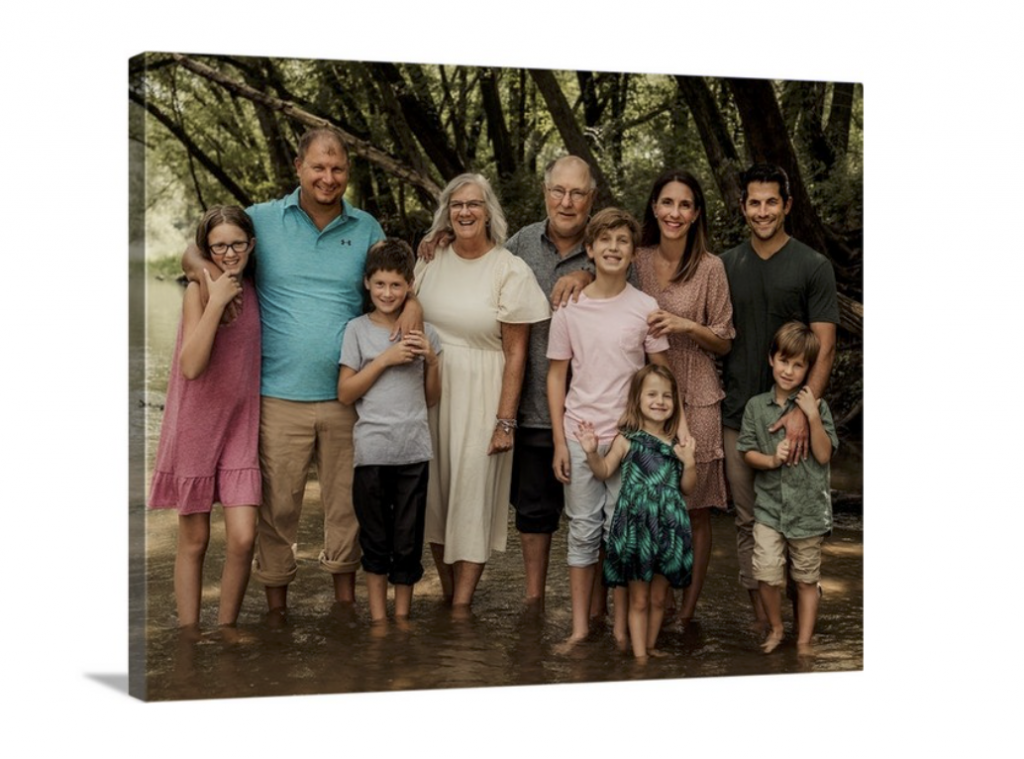
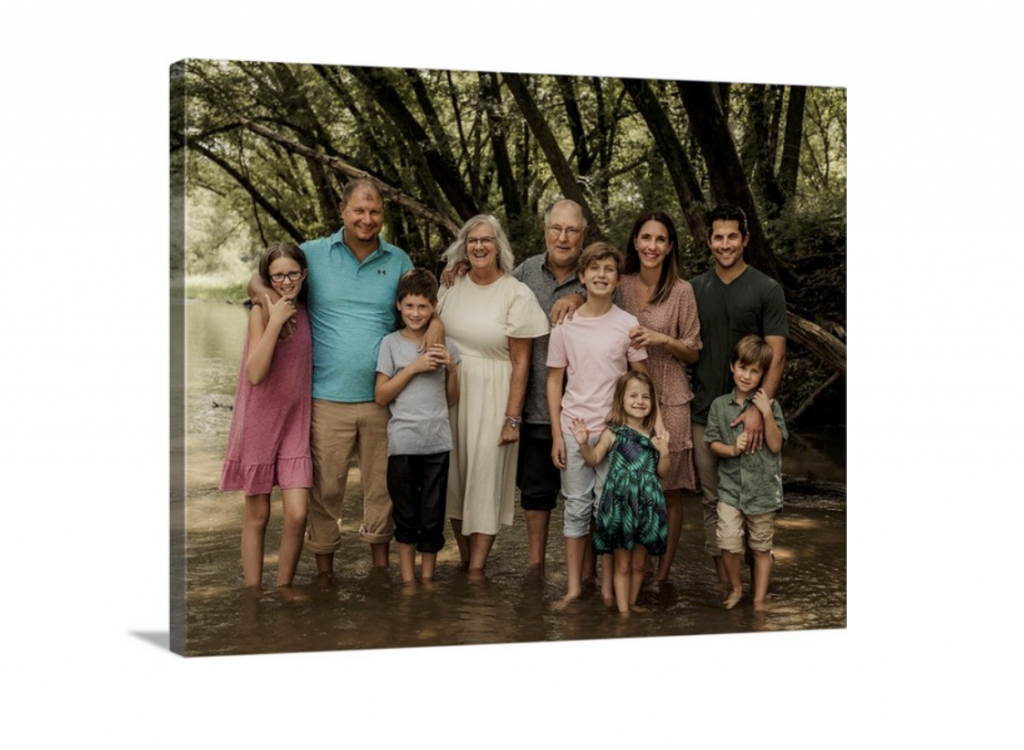
Now here’s some proper sorcery. For the Davis family’s canvas, I needed negative space on all sides to give them some breathing room. From the original, I recovered negative space below, above, and to the left. Unfortunately, the original shot was off-center, and had no more negative space on the right. I located a donor image that contained the missing background I needed. A little Photoshop magic and presto change-o: a much better canvas.
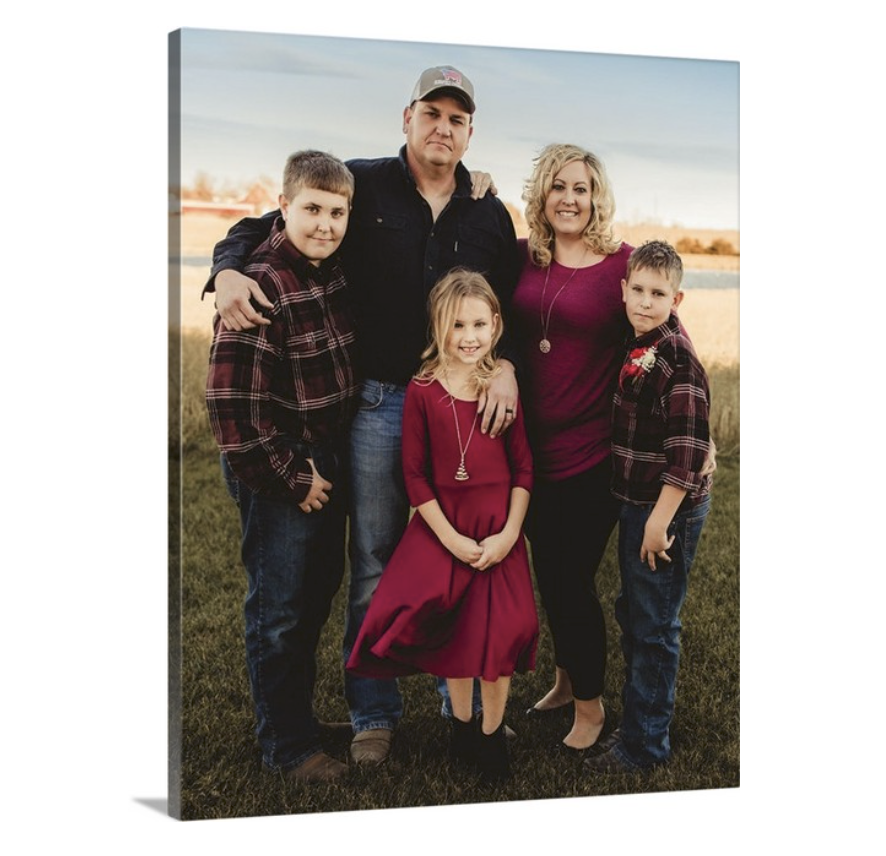
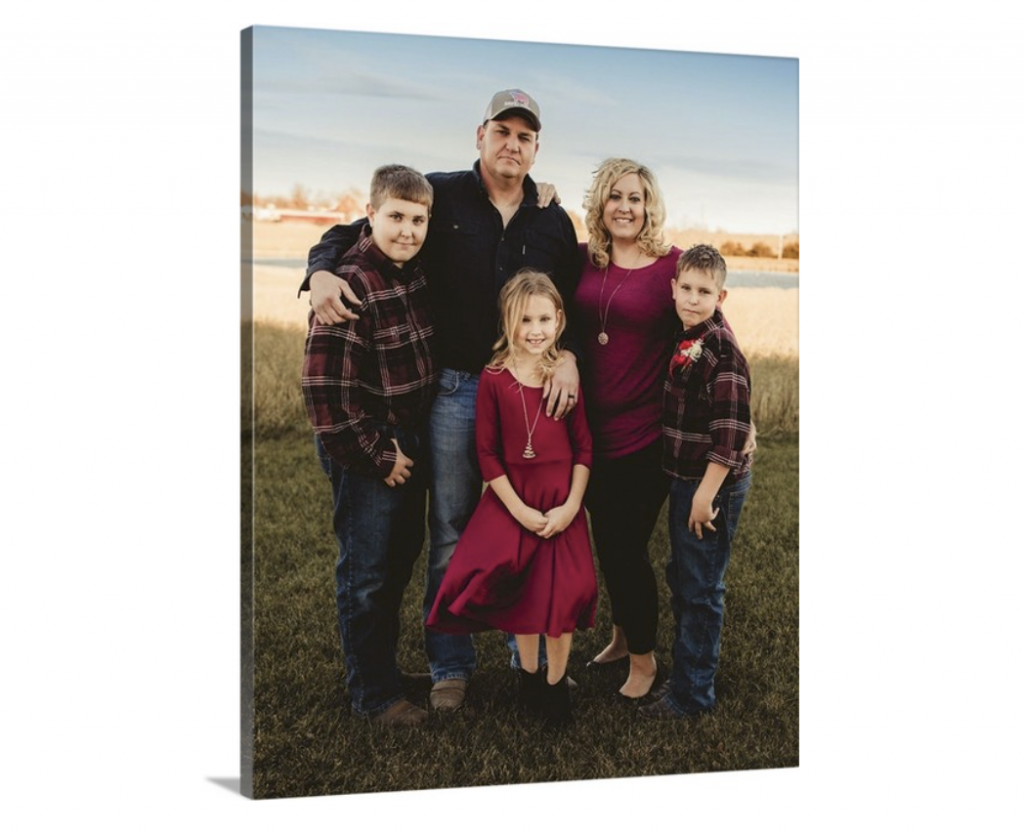
This type of adjustment requires your photographer to be comfortable in Photoshop, so it’s good to ask any photographer you hire how comfortable they are in Photoshop.
Related Post: How to hire a family photographer
Their Photoshop skills can be the kicker when it comes to a canvas of your favorite shot.
But don’t canvases through my photographer cost more?
My friend ordered her own canvases because she’s thrifty. It’s true that canvases purchased through most photographers cost more than Shutterfly or retailers. But just like DIY, sometimes it’s smart to pony up more to get the job done right.
Reason #1: It takes time to prepare an image for canvas printing. We’ll do everything humanly possible to get you the canvas you want: sifting through 800 unused images for a suitable donor, combining multiple images into one… whatever it takes. True, I occasionally get lucky and the original image is perfect for a canvas with no modifications… and I buy lottery tickets when that happens. 😀 But more often than not, Photoshop is required.
Reason #2: We use photo labs that don’t cut corners. Poorly made canvases will reveal themselves, sometimes in just a couple of months. A discount canvas made with subpar materials and craftsmanship will lose its tautness and begin to sag, the frames will warp over time, and most importantly, the skin tones will not be true to the original image. Nobody wants to look like a Cheeto in a piece of wall art they look at ten times a day.
Canvas “wrap” up (ha!)
There you have it: the low-down on why you should print your canvases through your photographer. DIY is awesome, I’m the first one to agree with that. But it’s not always awesome. Let your photographer lend her expertise and you’ll have stunning canvases on your walls.
Besides, I know you love your family too much to put them on display as amputees. 😀





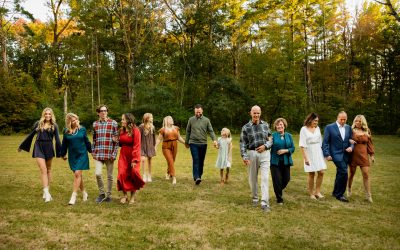
0 Comments